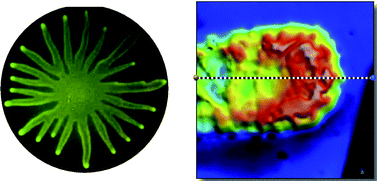Read the following for free until 9 April:
Scientists from Belgium have worked out a way to study the mechanism of bacterial growth in slime and to control the growth by using a surfactant.
Bacteria multiply in bacterial slime, which is made up of polysaccharides. Attempts to stop this growth have been done in the past, by preventing the bacteria from signalling to each other. Now, the team has stopped growth by controlling the slime instead. They did this by studying the slime’s surface tension gradient and then adding a biosurfactant to provide a counter gradient, which stopped the bacterial spread. The bacterium they studied was Pseudomonas aeruginosa, a major cause of hospital acquired infections.
Surface tension gradient control of bacterial swarming in colonies of Pseudomonas aeruginosa
M. Fauvart , P. Phillips , D. Bachaspatimayum , N. Verstraeten , J. Fransaer , J. Michiels and J. Vermant
Soft Matter, 2012, 8, 70-76
DOI: 10.1039/C1SM06002C
To keep up-to-date with all the latest research, sign up for the Soft Matter e-Alert or RSS feeds or follow Soft Matter on Twitter or Facebook.











